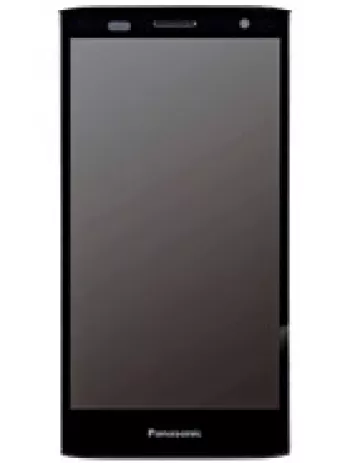Overview of Panasonic Eluga Icon
The Panasonic Eluga Icon, released in August 2015, has been a notable entry in the mid-range smartphone market. Despite being discontinued, it offers a look into the evolution of mobile technology in the mid-2010s. Offering a significant balance between performance and price, it was targeted at consumers who sought a budget-friendly device with reliable functionality.
Design and Body
The Eluga Icon boasts a sleek design, measuring 152.3 x 76.4 x 8 mm and weighing only 147 grams. Its slim profile and manageable weight make it quite easy to handle. The dual SIM functionality allows users to manage two different numbers simultaneously, which is advantageous for those managing personal and business contacts separately.
Display
The device is equipped with a 5.5-inch IPS LCD screen boasting a resolution of 720 x 1280 pixels. This results in a ~267 ppi density, ensuring reasonable sharpness and clarity for its category. The IPS display provides decent viewing angles and color reproduction, making media consumption a pleasant experience.
Performance and Platform
Under the hood, the Eluga Icon runs on an Octa-core 1.5 GHz CPU, ensuring smooth performance for most everyday tasks. While it operates on Android 4.4.2 KitKat, which is now outdated, the OS was quite popular in its release time and offered a straightforward user experience. With 2GB of RAM, multitasking is manageable, although demanding apps may stretch its capabilities.
Memory and Storage
The phone comes with 16GB of internal storage, which is modest by today’s standards. However, it includes a dedicated microSDHC card slot, allowing users to expand storage per their needs, a valuable feature for those who require extra space for apps and media.
Camera
The camera setup features a 13 MP rear camera with autofocus and LED flash, which is capable of capturing reasonably detailed images, particularly in well-lit conditions. It can record video at 1080p@30fps, making it suitable for basic video recording requirements. For selfies and video calls, the front-facing 8 MP camera does a satisfactory job.
Battery
A standout feature of the Eluga Icon is its 3500 mAh lithium-ion non-removable battery. Offering up to 19 hours of talk time and up to 900 hours on standby (3G), it provides substantial longevity for users who prioritize battery life in their mobile devices.
Network and Connectivity
The phone supports GSM, HSPA, and LTE networks, ensuring decent connectivity options. It features Wi-Fi 802.11 b/g/n, Wi-Fi Direct, hotspot capabilities, and Bluetooth 4.0 with A2DP for seamless wireless connections. The inclusion of GPS enhances navigation and location-based services, although it lacks NFC technology.
Additional Features
The Panasonic Eluga Icon comes equipped with essential sensors like accelerometer and proximity sensors. For audio, it retains a 3.5mm jack for traditional headphone users and has a loudspeaker for audio playback. The phone also has FM radio capabilities, catering to users who enjoy live radio broadcasts.
Market Impact and Pricing
Priced around 160 EUR at launch, the Panasonic Eluga Icon positioned itself as a cost-effective option in the smartphone sector. Its blend of features appealed to budget-conscious consumers seeking a practical device that didn’t compromise essential performance factors.
Conclusion
In conclusion, the Panasonic Eluga Icon represented a strategic attempt by Panasonic to capture the mid-range smartphone market with balanced specifications and competitive pricing. Although it has been discontinued, it remains a model of interest for those studying the evolution of smartphone technology and market trends from that period.
Key Features of Panasonic Eluga Icon
- Supports GSM, HSPA, and LTE network technologies for broader connectivity options.
- Slim and lightweight design with dimensions of 152.3 x 76.4 x 8 mm and a weight of 147 g.
- Dual SIM capability for managing two numbers simultaneously.
- 5.5-inch IPS LCD with a resolution of 720 x 1280 pixels, providing clear and vibrant visuals.
- Powered by an Octa-core 1.5 GHz processor, ensuring smooth performance.
- Equipped with 16GB internal storage and 2GB RAM, expandable via microSDHC.
- 13 MP main camera with autofocus and LED flash, capable of recording 1080p videos at 30fps.
- 8 MP front-facing selfie camera for high-quality self-portraits.
- Includes a 3.5mm audio jack and FM radio support, catering to audio enthusiasts.
- Connectivity options include Wi-Fi 802.11 b/g/n, Bluetooth 4.0, and microUSB 2.0 with OTG support.
- Long-lasting 3500 mAh non-removable battery, offering up to 19 hours of talk time on 3G networks.
- Available in a sleek black color, priced at approximately 160 EUR.
Panasonic Eluga Icon Disadvantages
- Outdated Operating System: Runs on Android 4.4.2 KitKat, which lacks support for the latest apps and security updates.
- No NFC Support: Does not include NFC, limiting contactless payment and data transfer capabilities.
- Low Display Resolution: 720 x 1280 pixels display results in a low pixel density of ~267 ppi, affecting overall screen sharpness.
- Limited Internal Storage: Comes with only 16GB internal storage, which may be insufficient for many users without extensive app and media usage.
- Non-Removable Battery: The battery is non-removable, hindering replaceability if performance degrades over time.
- Discontinued: The device is discontinued, meaning no further updates, support, or new units being produced.
- Lacks Advanced Sensors: Only includes basic sensors like accelerometer and proximity sensor, with no advanced features like fingerprint sensor or gyroscope.
View Also
More Phones
All Rights Reserved +14266 Phones © Mobilawy 2025

























